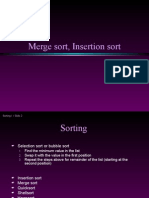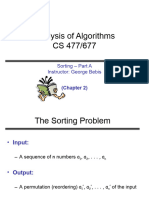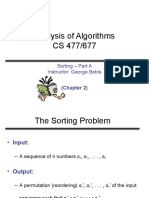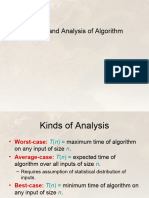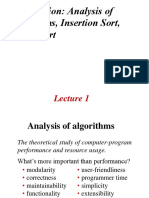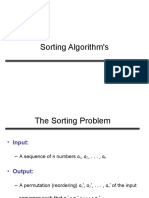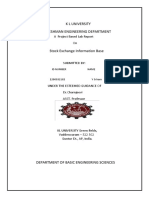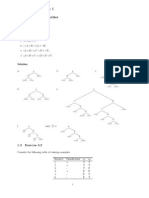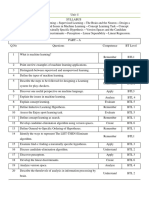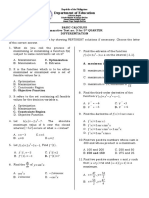0% found this document useful (0 votes)
44 views40 pagesSorting 1
The lecture covers sorting algorithms, focusing on Insertion Sort and Merge Sort. Insertion Sort is explained with its pseudocode, running time analysis, and examples, while Merge Sort is introduced as a divide-and-conquer algorithm with its own analysis. The lecture concludes that Merge Sort is asymptotically more efficient than Insertion Sort for larger inputs.
Uploaded by
Nolawi GetyeCopyright
© © All Rights Reserved
We take content rights seriously. If you suspect this is your content, claim it here.
Available Formats
Download as PDF, TXT or read online on Scribd
0% found this document useful (0 votes)
44 views40 pagesSorting 1
The lecture covers sorting algorithms, focusing on Insertion Sort and Merge Sort. Insertion Sort is explained with its pseudocode, running time analysis, and examples, while Merge Sort is introduced as a divide-and-conquer algorithm with its own analysis. The lecture concludes that Merge Sort is asymptotically more efficient than Insertion Sort for larger inputs.
Uploaded by
Nolawi GetyeCopyright
© © All Rights Reserved
We take content rights seriously. If you suspect this is your content, claim it here.
Available Formats
Download as PDF, TXT or read online on Scribd
/ 40
























